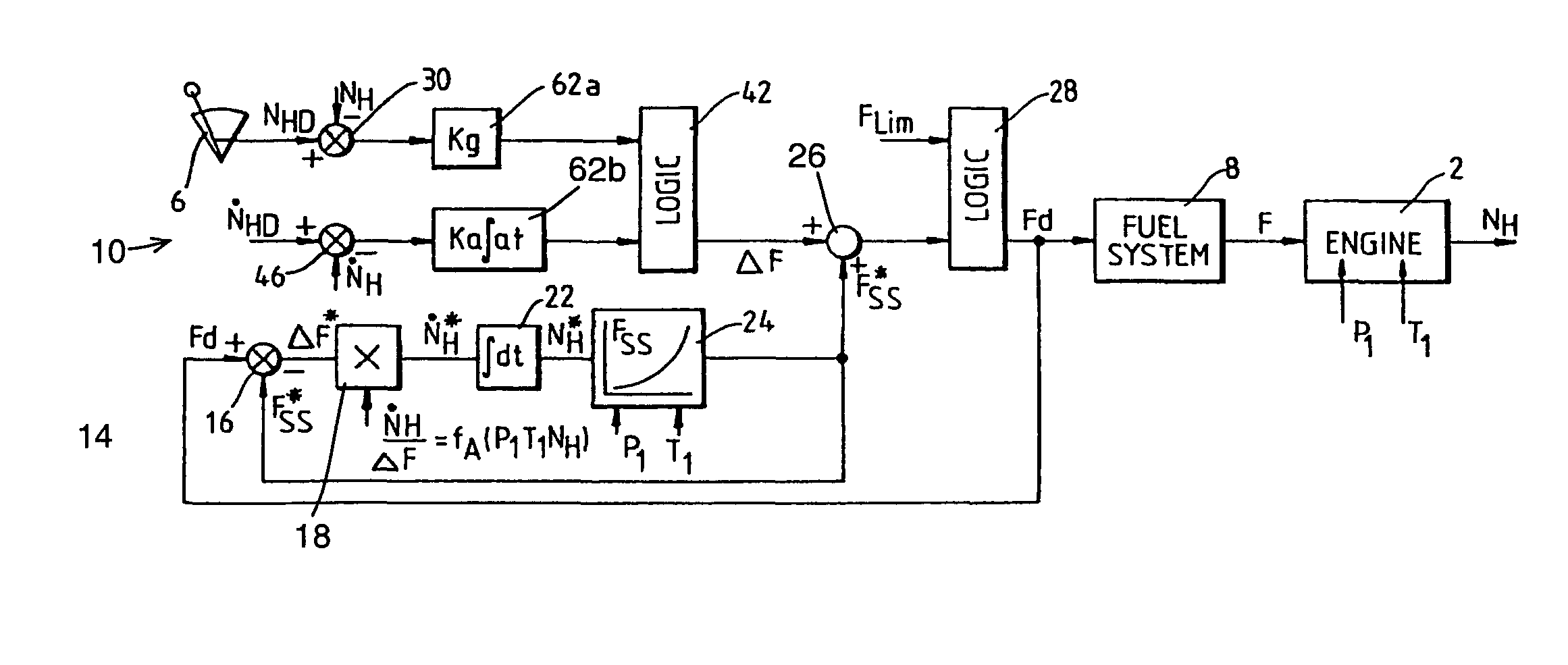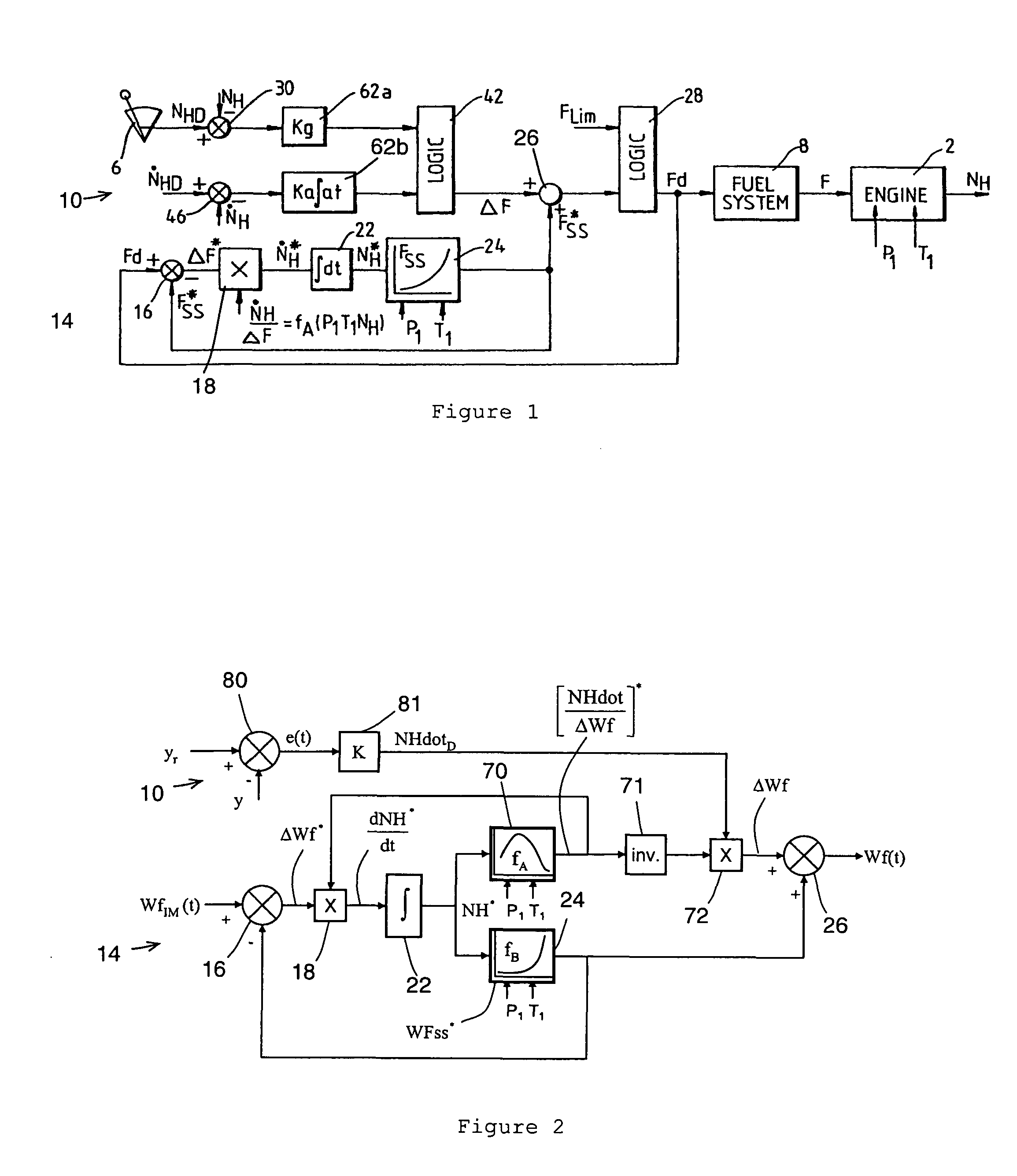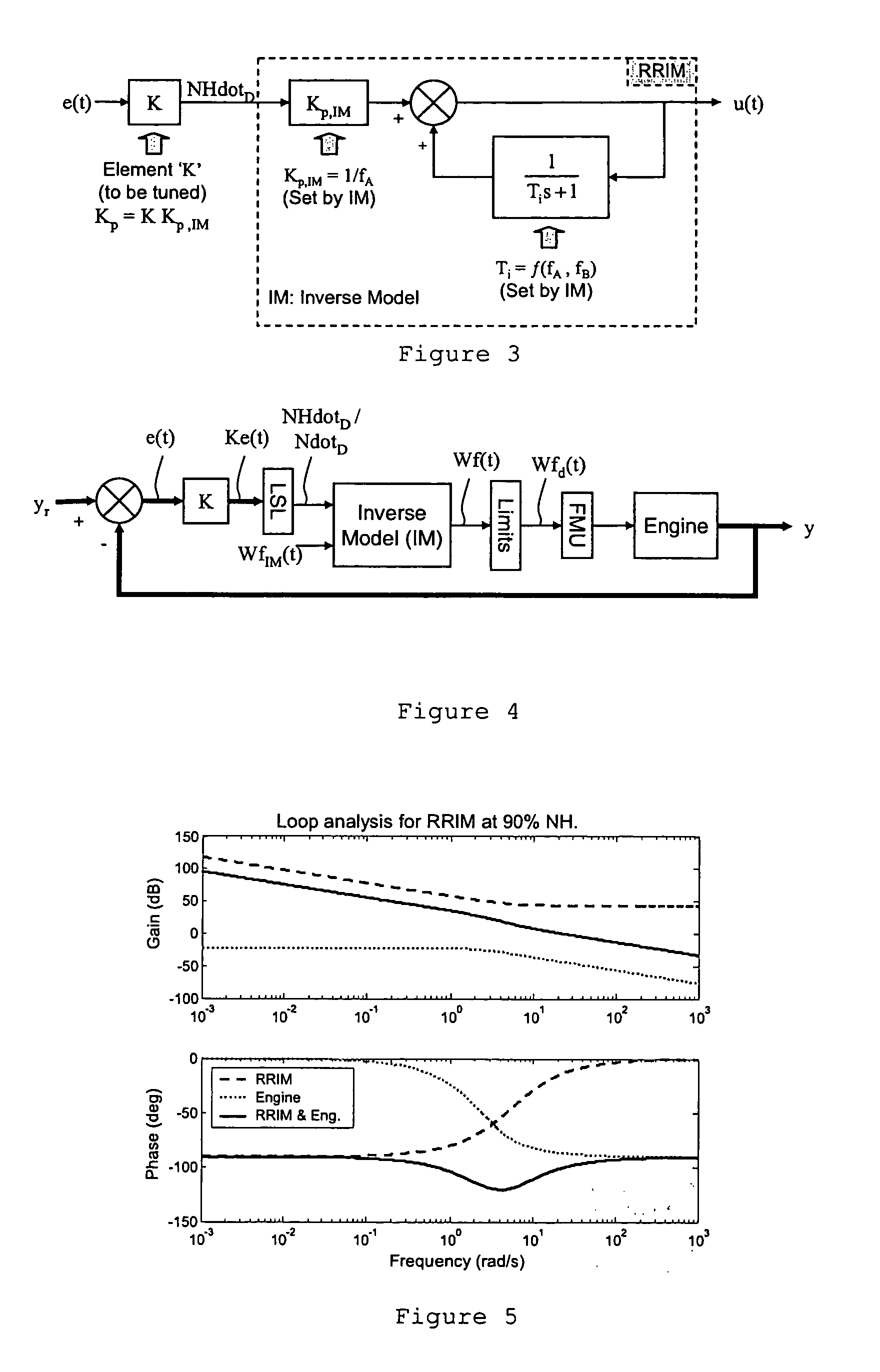Control system
a control system and control technology, applied in adaptive control, process and machine control, instruments, etc., can solve problems such as excessive leakage of working fluid, substantial performance degradation, and increased clearan
- Summary
- Abstract
- Description
- Claims
- Application Information
AI Technical Summary
Benefits of technology
Problems solved by technology
Method used
Image
Examples
Embodiment Construction
[0092]Engine Fuel Control System Embodiments
[0093]Before describing engine fuel control system embodiments of the invention, it is helpful to consider in more detail the architecture of an engine fuel control system known as the Rolls-Royce Inverse Model, or RIMM. FIG. 2 shows the structure of the RRIM, which is similar to the engine fuel control system shown in FIG. 1.
[0094]The same reference numbers are used to indicate equivalent features in FIGS. 1 and 2, although in FIG. 2 Wf is used instead of F to indicate a fuel flow requirement, and ΔWf is used instead of ΔF to indicate an overfuelling requirement. To simplify matters, the system downstream from summing junction 26 is omitted from FIG. 2. The signal generator 6, engine speed error circuit 30 and acceleration limiter loop comparator 46 are replaced by a generic control error circuit 80 representing any control loop. The signal “yr” is a vector of the reference values of the controlled engine outputs (corresponding to the NHD...
PUM
 Login to View More
Login to View More Abstract
Description
Claims
Application Information
 Login to View More
Login to View More - R&D
- Intellectual Property
- Life Sciences
- Materials
- Tech Scout
- Unparalleled Data Quality
- Higher Quality Content
- 60% Fewer Hallucinations
Browse by: Latest US Patents, China's latest patents, Technical Efficacy Thesaurus, Application Domain, Technology Topic, Popular Technical Reports.
© 2025 PatSnap. All rights reserved.Legal|Privacy policy|Modern Slavery Act Transparency Statement|Sitemap|About US| Contact US: help@patsnap.com



